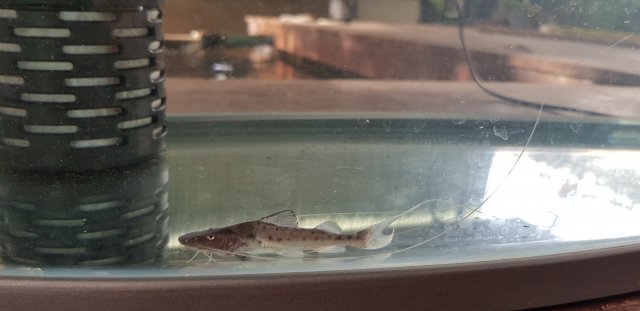Looks like a capapretum to me (being offered as filamentosum)
http://www.monsterfishkeepers.com/forums/threads/piraiba-pictures.520869/
http://www.monsterfishkeepers.com/forums/threads/piraiba-pictures.520869/


Hi
From that other thread thebiggerthebetter cited here. After owning a rather obvious B. capapretum for a while, I got my hands on this guys. Its looking and behaving like a filamentosum, but I'd doubt that its the "real Mc Coy" filamentosum that fugupuff mentioned. Would love to hear input from you guys.
Both photos are the same fish I presume to be B. Filamentosum by the way.
View attachment 1323676
View attachment 1323678
... but I'd doubt that its the "real Mc Coy" filamentosum that fugupuff mentioned...
Haven't asked my importer yet but I assume from the bulk import that its a peruvian filamentosum.What do you mean? What makes you state this? (Looking to learn.)
Haven't asked my importer yet but I assume from the bulk import that its a peruvian filamentosum.
We're all agreeing that by classification the fish I own would align itself towards being a filamentosum, but even then there are variation among the filamentosum themselves from different source locations , which fugupuff distinguishes. From what he has said so far I believe that the "true" filamentosum presented in Asian pet trade would be a wild variety from Suriname or Brazil, which fetches for a high price due to its difficulty in obtaining. On the other hand the Peruvian variety, which is what I guess I own, would be disregarded as actual piraiba despite being one in terms of scientific classification. These fish from Peru are most likely bred, as the importer obtained large quantities of small sized specimens (2-3 inches), and sold in a price similar to that of a capapretum's (at least in Thailand). I've heard rumours that both the bred fila and capa would've been a strain originating from Peru, although being secondhand unreliable data I'm not sure whether I'm accurate here.
And thats why I'm eager to learn from someone who's in the know on this.
I think you have explained it well. Other thanfugupuff and perhaps
vincentwugwg and
amazonfishman I am not sure who else could elucidate this issue. Even with these guys, I'd not count on complete sorting.
That the fila that come from Peru could be artificially bred is a novel thought to me. Or any fila for that matter. I assumed (without any grounds) that all fila are wild caught. Although Wes did speak of some suspected hybridization experiments.
In the US, Peru fila are generally 2x more expensive than capa, $80-$120 versus $200-$300, all small specimen, from 2"-3" to at most 4"-5".


